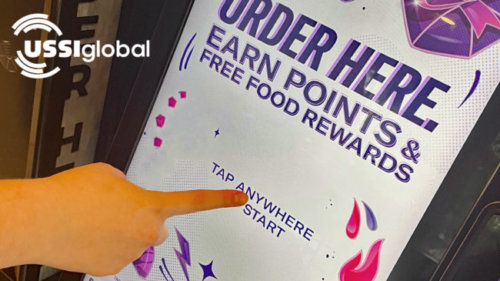Q&A: Chris Northrup Talks Key Concepts for Kiosks
 From quick-serve restaurants (QSRs) to college campuses, kiosks continue to grow in popularity. We talked with Chris Northrup, vice president of business development, digital signage solutions, to get some insights on making the most of your kiosk strategy.
From quick-serve restaurants (QSRs) to college campuses, kiosks continue to grow in popularity. We talked with Chris Northrup, vice president of business development, digital signage solutions, to get some insights on making the most of your kiosk strategy.
Q: Why should an organization consider installing kiosks?
A: There are lots of reasons to install a kiosk. Wayfinding is a popular use – kiosks are great tools for providing directions. You’ve also seen kiosks in QSRs because they can improve the speed and accuracy of ordering meals. With the current labor situation, companies are installing ordering kiosks to ensure business continues. Something else to consider, though, is that kiosks can improve employee satisfaction, because they can get rid of dull tasks like checking in appointments or providing directions to various locations across campus. This can lead to increased employee efficiency.
Q: What are some of the most important elements needed for the successful deployment of kiosks?
A: What are you going to do with it? You need to answer that question first, because if you install a kiosk without a defined purpose, it’s not going to accomplish much. Once you know what it’s supposed to do, you need to figure out the functionality. What content are you going to include, and what is your plan to manage that content to keep it dynamic and up to date? The kiosk also has to be easy to use. If it gets too complicated, customers get frustrated and start looking for an employee – if that happens, your kiosk hasn’t done its job. And location is key. For example, you wouldn’t install a food ordering kiosk near the bathroom; it needs to go near the front counter. On your corporate campus, where a kiosk is likely to be used for wayfinding or informational, it will be most useful near the front door or the elevators.
Q: How do you keep kiosk content up to date?
A: Like any digital signage application, content is king. No matter the use, kiosk content will need to be refreshed. A wayfinding kiosk at a shopping center needs to have a current list of stores and updated store hours. At a QSR, there will likely be limited time offers (LTOs) that are offered through a marketing plan from a centralized location. You could update content via a USB port, but that requires the inefficiency of an individual physically going to each location every time there’s a change. Connecting your kiosks to your network is a much more effective way push changes to every location all at once.
Q: Generally speaking, what is the expected “useful life” of a kiosk?
A: The life of a kiosk really depends on how it’s built and the display itself. The display is the biggest factor. The useful life of an LCD screen is roughly three to five years if deployed for 24/7 use. As long as your kiosk is designed to allow the display to be replaced, and the structure itself is designed not to rust, technology upgrades can extend the life of your kiosk.
Q: How can you extend the life of an outdoor kiosk?
A: Try to put it in a location where it won’t be abused as much by the elements. You also want a preventative maintenance plan. An outdoor kiosk should be serviced twice a year, with a technician cleaning the filters and checking the efficiency of any fans in the structure that keep the components cool. An indoor kiosk should be serviced annually. You should also have your kiosks on your network, so it’s easy to monitor the health of each unit from a centralized location. Preventative maintenance extends the life of almost any technology, including kiosks. USSI Global offers service, repair, and monitoring contracts to address your maintenance needs.
Q: How important is a touchscreen?
A: It depends on the application. Not every kiosk needs a touchscreen. Some kiosks are information only, such as an EV charging station that provides a steady stream of advertising messages for users. It’s not meant to be interactive. Touchscreens are becoming more prevalent because they are easier to get. Plus, newer display technologies have made touchscreens sturdier and more responsive. Think of how much better today’s phones and tablets are compared to earlier models.
Q: How does USSI Global help customers who are considering kiosks for their businesses?
A: We offer customized turnkey solutions for kiosks. We help determine the best kiosk for your application and then source those models. We can also handle permits and installation. Not sure where you want to install them? We can help with placement, too. Plus, USSI Global can deliver a content management system that best fits the application. We’re also the ones to call for post-installation services, with the ability to monitor your content and the health of your kiosk through service and maintenance contracts.
Need more information? Contact our sales team at [email protected].

